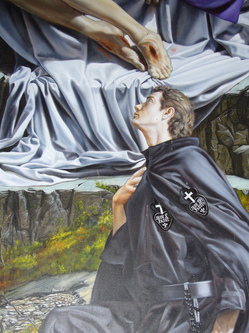 O good St. Gabriel, God inspired you to love the passion of Jesus as it was reflected in the heart of Mary, his mother. By her side, you stood beneath the cross of Jesus, gazing on him as she did, and sharing her compassion. O St. Gabriel, we wish, like you, to grow in love for God and all his people. Remember us in the trials of our life. Remember especially those who are young and in need.
O good St. Gabriel, God inspired you to love the passion of Jesus as it was reflected in the heart of Mary, his mother. By her side, you stood beneath the cross of Jesus, gazing on him as she did, and sharing her compassion. O St. Gabriel, we wish, like you, to grow in love for God and all his people. Remember us in the trials of our life. Remember especially those who are young and in need.Saints: February 2011 Archives
 O good St. Gabriel, God inspired you to love the passion of Jesus as it was reflected in the heart of Mary, his mother. By her side, you stood beneath the cross of Jesus, gazing on him as she did, and sharing her compassion. O St. Gabriel, we wish, like you, to grow in love for God and all his people. Remember us in the trials of our life. Remember especially those who are young and in need.
O good St. Gabriel, God inspired you to love the passion of Jesus as it was reflected in the heart of Mary, his mother. By her side, you stood beneath the cross of Jesus, gazing on him as she did, and sharing her compassion. O St. Gabriel, we wish, like you, to grow in love for God and all his people. Remember us in the trials of our life. Remember especially those who are young and in need.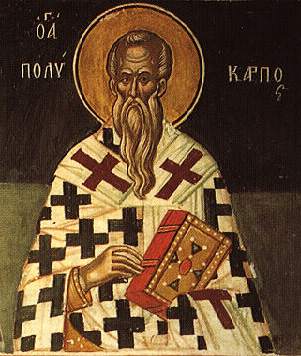
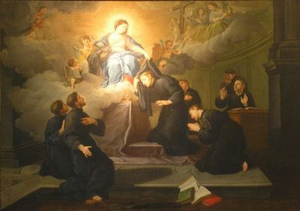 The collect prayed by the priest at Mass for today's
optional memorial of the 7 holy founders of the Servite Order asks the Lord for
same "love which inspired the seven holy brothers to honor the Mother of God
with special devotion and to lead your people to you." Servites, a 13th century mendicant order inspired by the first Dominican martyr, Saint Peter of Verona, are devoted to
the Our Lady of Sorrows and are to live a life of penance. Theirs, like what all Christians live, is a life
discipleship with Christ Crucified. The is the key to our salvation. And the
Servite founders remind us that following Christ necessarily means bearing the
cross.
The collect prayed by the priest at Mass for today's
optional memorial of the 7 holy founders of the Servite Order asks the Lord for
same "love which inspired the seven holy brothers to honor the Mother of God
with special devotion and to lead your people to you." Servites, a 13th century mendicant order inspired by the first Dominican martyr, Saint Peter of Verona, are devoted to
the Our Lady of Sorrows and are to live a life of penance. Theirs, like what all Christians live, is a life
discipleship with Christ Crucified. The is the key to our salvation. And the
Servite founders remind us that following Christ necessarily means bearing the
cross.
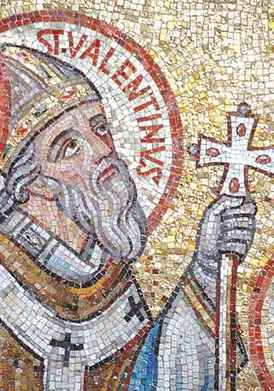
The Church's hagiographical tradition (lives of the saints) the Roman Emperor Claudius prohibited young men from getting married because he wanted them for his army. Valentine, a priest of Rome, contradicted the Emperor's wishes and married couples in secret. This act of deviance, and the fact that he helped martyrs at the time of persecution, landed Valentine in prison with a death sentence. He was beaten and beheaded. Saint Valentine's relics repose in the Church of Saint Praxedes (near to the papal basilica of Santa Maria Maggiore). Corresponding with some married couples Valentine would sign his letters, 'Your Valentine'.
Valentine was martyred in 269 at Rome and buried on the Flaminian Way. He is the patron saint of beekeepers, engaged couples, epilepsy, fainting, greetings, happy marriages, love, lovers, plague, travelers, and young people. Valentine is often portrayed with birds and roses in iconography.
As a cultural note, the Flaminian Way is one of the principal Roman roads leading from
Rome to Gaul. The road's construction was begun in 220 BC by Caius Flaminius.
 O Cyril Methodius, glorious teachers, with brilliance you taught
the Moravians to bless God in their own words, by translating the law of the
Lord from Greek into Slavonic. You taught His righteousness. Therefore, the
Slav peoples now give glory to God in joy.
O Cyril Methodius, glorious teachers, with brilliance you taught
the Moravians to bless God in their own words, by translating the law of the
Lord from Greek into Slavonic. You taught His righteousness. Therefore, the
Slav peoples now give glory to God in joy.Our Church was not built after a name of a See or Apostle, but rather took its identity from the radiance of a man and a monastery: the Maronite Church, a Church of asceticism and adoration attached from the beginning to a solitary man, not a man of rank or a Church leader.The faith lived out by the hermit Maron became the inner strength of a people's history. As for the successive migrations from Syria (in the 5-10th centuries), the Maronites gave them one meaning, that is, giving up land, wealth and comfort in Syria moving toward a poor land where anxiety and austerity prevail, so they could preserve their faith and remain attached to their freedom ... This event is not a simple historical fact among others ... it is the very beginning of a new history, the history of the Maronites.
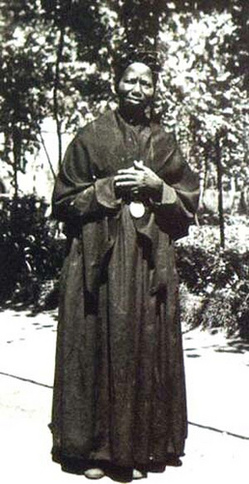
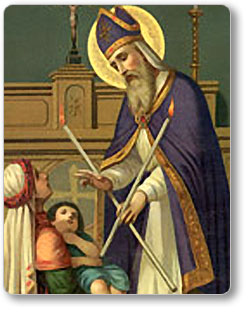
Lord, hear the prayers of Your martyr Blase. Give us the joy of Your peace in this life and help us to gain the happiness that will never end.
The Church has few exact details of the life of Saint Blase (also Blaise, Biago, Sveti Vlaho) but we have the experience of his popularity through the centuries in the churches of the East and West. What we know is that Blase was a physician, the Bishop of Sebaste, Armenia and martyr. The Roman Martyrology tells us that he was beheaded in 316.
More info on Saint Blase is found here and here.
The Blessing of Candles on the feast of St Blase can be found here.
The Blessing of Bread, Wine, Water and Fruit for the feast.

From the Golden Legend again:
And when this good widow, which by S. Blase had recovered her swine, heard thereof, she slew it, and the head and the feet with a little bread and a candle, she brought to S. Blase, and he thanked God and ate thereof, and he said to her that every year she should offer in his church a candle, and know thou that to thee and to all them that so shall do shall well happen to them, and so she did all her life, and she had much great prosperity.
Even after imprisonment, he refused to worship the prince's gods, and for punishment his flesh torn by wool combs. He was finally beheaded, martyred along with seven women and two children.
Today, due to the cure of the boy's throat when the boy was choking, Saint Blase is patron against diseases or any other trouble of the throat.
The priest will bless two candles in honor of Saint Blase.

O holy Brigid, you became sublime through your humility, and flew on the wings of your longing for God. When you arrived in the eternal City and appeared before your Divine Spouse, wearing the crown of virginity, you kept your promise to remember those who have recourse to you. You shower grace upon the world, and multiply miracles. Intercede with Christ our God that He may save our souls. (Troparian, tone 1)
Lord, you
inspired in Saint Brigid such whole-hearted dedication to your work that she is
known as Mary of the Gael; through her intercession bless our country; may we
follow the example of her life and be united with her and the Virgin Mary in
your presence.
More on Saint Brigid here.

